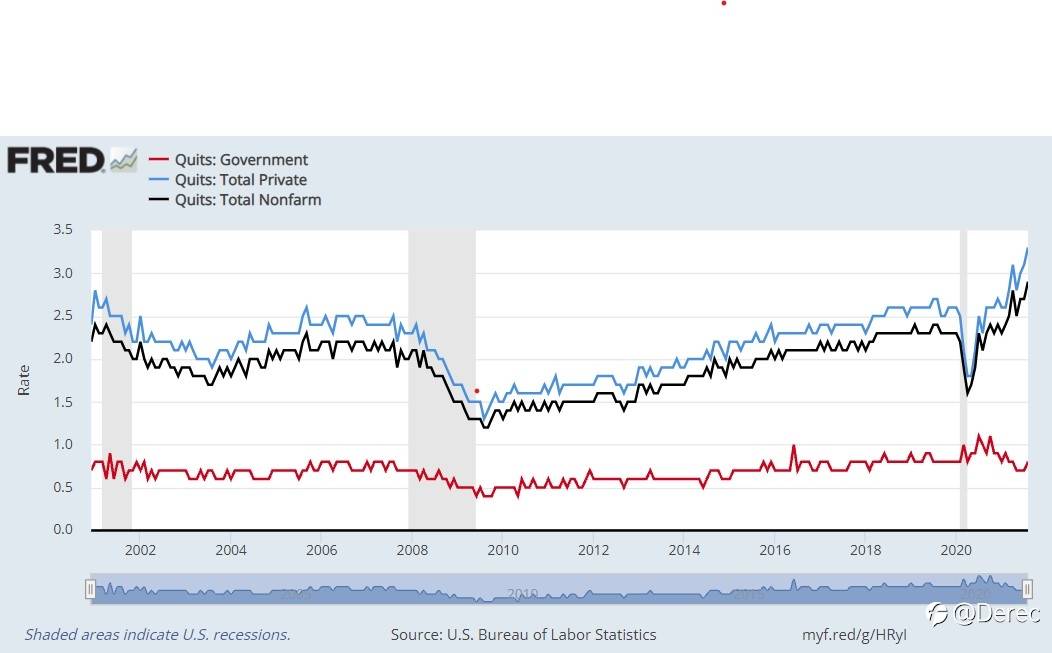Although the FRED Blog is committed to the long haul, we’ve discussed quitting before: that is, data on voluntary separations from employment. For example, earlier this year, a post covered quits for currently employed workers during economic downturns.
Conventional wisdom says that quits decrease during recessions and increase during expansions. But because there was hardly anything conventional about the COVID-19-induced economic shock, we take a look at the recent evolution of voluntary separations. And from the graph above, we see that the overall level of quits has reached new heights.
The graph plots data from the Job Openings and Labor Turnover Survey from the U.S. Bureau of Labor Statistics (BLS), showing the percentage rate of quits among all nonfarm employees (in black), private-sector employees (in blue), and government employees (in red). Because private-sector employees greatly outnumber government employees, the all-employees quit rate most closely reflects the labor market experiences of that private-sector group. Yet, regardless of the relative size of each section of the labor force, private employees quit their jobs three times more frequently than government employees do.
The data show some milestones: In August 2021, the overall quit rate hit at an all-time high of 2.9%. Private-sector employees have been quitting their jobs at unprecedented rates since April 2021, reaching 3.3% in August 2021. In contrast, the record-high quit rate among government employees is 1.1%, reported in both July and October of 2020. It has declined since then and seems to be returning to its very stable recent average of 0.8%.
These developments provide additional evidence that the private and public groups occupy different segments of the labor market. The January 2020 BLS survey on employee tenure reports government workers keep their jobs almost twice as long as private-sector workers do. Researchers at the BLS point out the former are, on average, older than the latter. No doubt the incentives to remain on the job significantly change with age, but when overall labor conditions change dramatically, perhaps the sunk cost fallacy (i.e., staying on a course of action due to a cost that has already been incurred and cannot be recovered) is unduly affecting some workers’ choices.

Disclaimer: The content above represents only the views of the author or guest. It does not represent any views or positions of FOLLOWME and does not mean that FOLLOWME agrees with its statement or description, nor does it constitute any investment advice. For all actions taken by visitors based on information provided by the FOLLOWME community, the community does not assume any form of liability unless otherwise expressly promised in writing.
FOLLOWME Trading Community Website: www.followme.com


Load Fail()